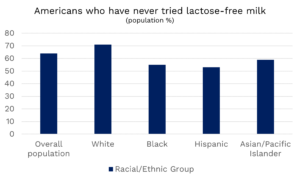Voters spoke clearly last Nov. 5: They want change in Washington. President-elect Donald Trump’s convincing victory, combined with Republican control of both houses of Congress, provides a clear path for important changes in a wide range of policy, both domestic and foreign.
It’s only natural during a time like this to begin playing what-ifs, taking past statements, genuine policy concerns, and anxieties about the road ahead, and mixing them into reactions that may or may not be useful as developments occur. The reality is that much remains unknown about what lies ahead in Washington. For dairy, like everyone else, the prudent path is to focus on what’s known, remember first principles and keep energy from becoming exhausted over speculations that at this moment are only that – speculation.
One example of focusing on what’s real is tax policy. Current tax provisions enacted by Congress in 2017 are due to expire at the end of 2025. Congress will need to do something to keep those provisions from expiring. That’s a fact. Several of those provisions, such as the Section 199A Qualified Business Income Deduction, are important to dairy farmers and the cooperatives they own. We at NMPF are already engaged in conversations on policy that will help our members and are well-positioned to advance this discussion in the year ahead.
The farm bill is another example. With current law already lapsed, an extension of the 2018 Farm Bill will pass this year to tee up a new law in 2025. We are urging lawmakers to make either type of legislation a vehicle to advance portions of our Federal Milk Marketing Order modernization plan that require congressional action, such as a mandatory plant-cost study to help inform future discussions about a proper make allowance. Regardless of what farm bill ultimately takes shape, we know there will be one – and we are prepared to make it work for dairy.
Along with the certainties, other issues that are important to dairy – and dominate headlines – have less-certain paths. In these cases, it’s important to know where we stand and be prepared to inform and educate policymakers as always. But beyond that, the best course is to engage with actual events rather than the latest, breathless, but ultimately questionable, narrative.
We know, for example, that foreign workers are critical to the success of U.S. dairy, and that we will work closely with members of Congress and federal officials to show the importance of those workers to the dairy industry, farm communities, and food security. We also know that we support long-standing Food and Drug Administration policy on restricting the sale of raw milk, due to public health and consumer confidence risks, and that we will work productively with anyone in federal leadership on these concerns. But neither of those issues — to cite only those two — have fully taken shape. Speculation makes good sound bites, but may not encourage good, sound policy in the long run.
And good, sound policy is what we need to be about.
So, while some are excited, and some are anxious, about what may lie ahead in Washington in the year ahead, a deep breath and careful consideration is warranted. U.S. dairy, U.S. agriculture and the nation are on the first steps of a journey. Let’s choose them wisely.
Gregg Doud
President & CEO, NMPF









